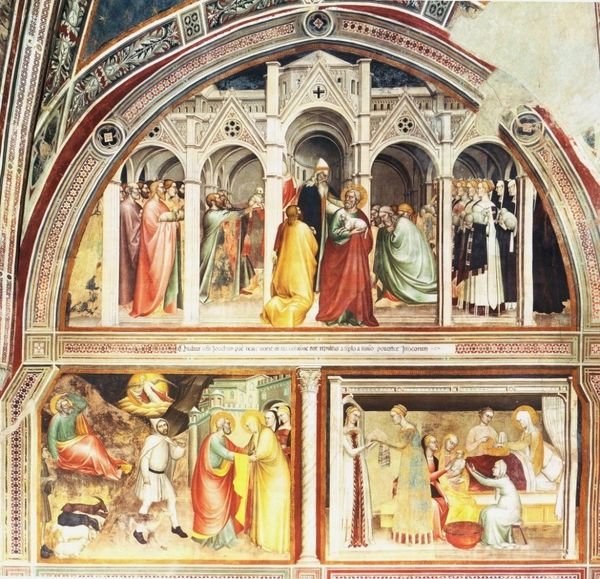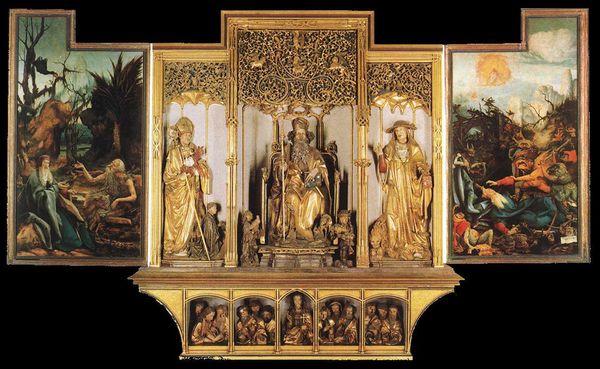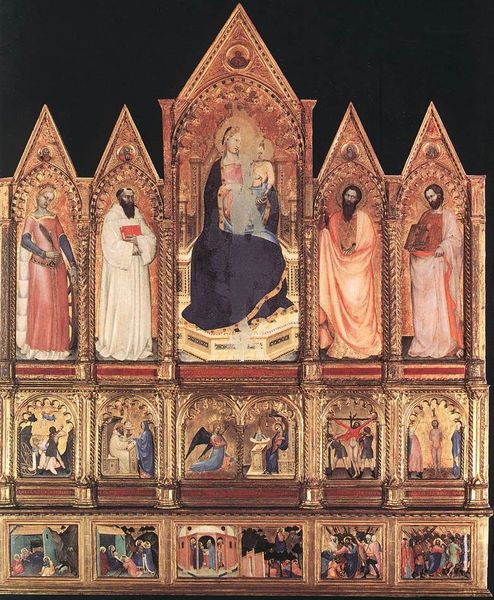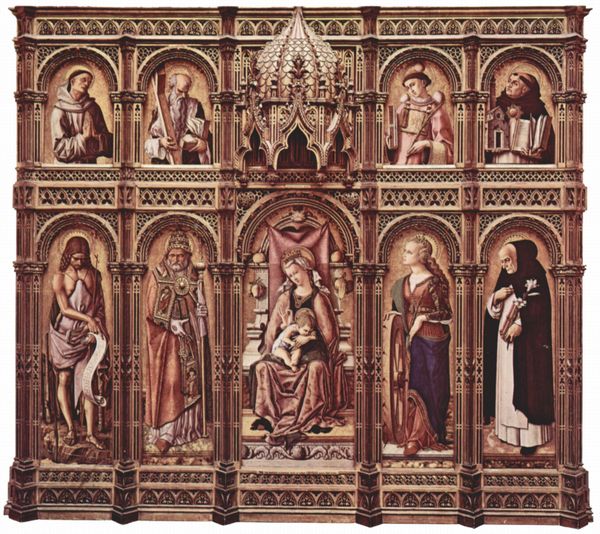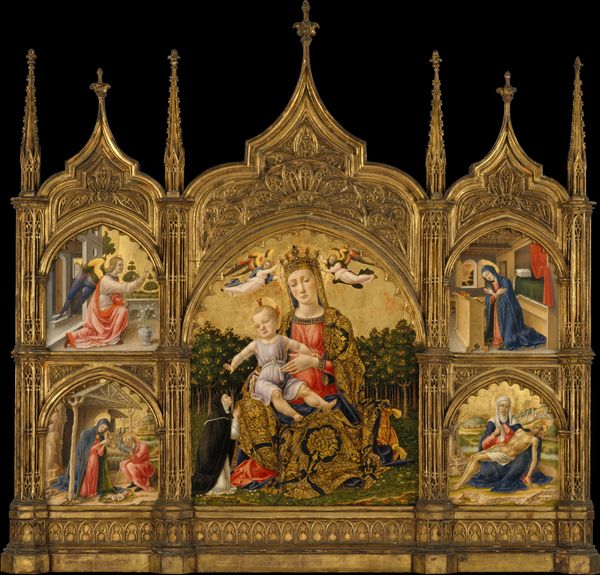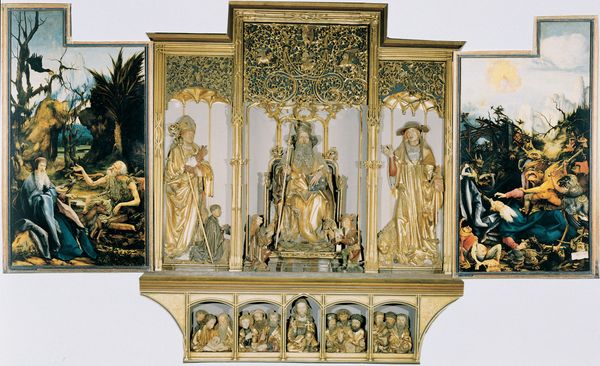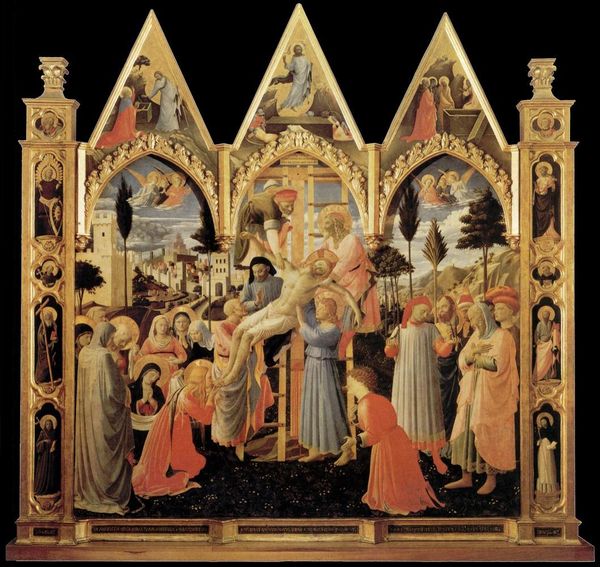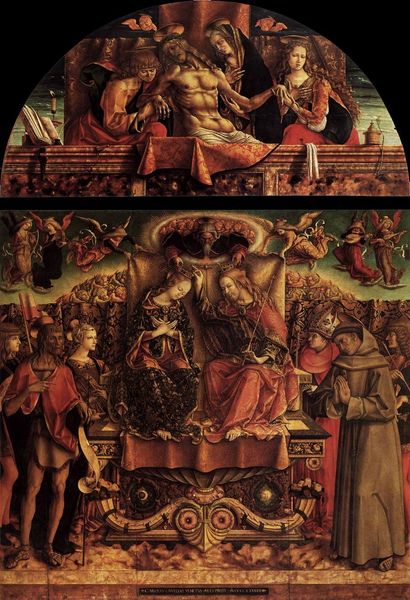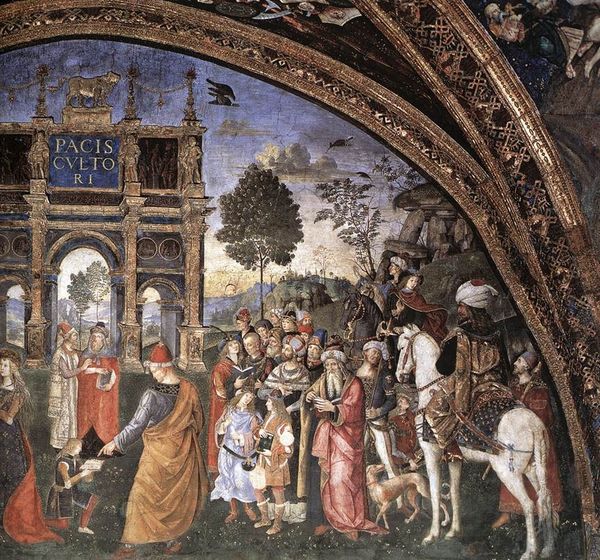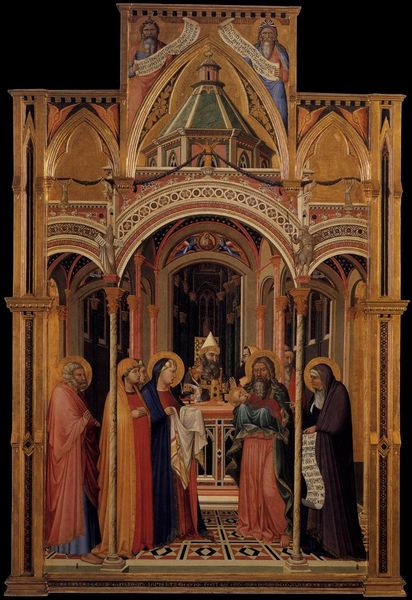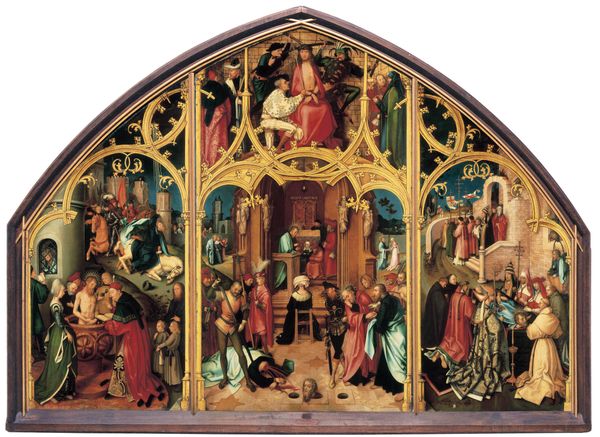
tempera, painting, oil-paint
#
medieval
#
narrative-art
#
tempera
#
painting
#
oil-paint
#
holy-places
#
figuration
#
traditional architecture
#
oil painting
#
christianity
#
mythology
#
history-painting
#
italian-renaissance
#
early-renaissance
#
realism
#
christ
Dimensions: 301 x 283 cm
Copyright: Public domain
Which country do you most closely associate with the word ‘Renaissance’? Chances are, it’s probably Italy. For centuries, scholars have prioritised European artists when discussing the movement. More recently, however, art historians are attempting to expand the Renaissance by rethinking the separation between western and non-western arts. 🌍 The exchange of ideas, styles, pigments, and materials across the globe has long been overlooked. So, how might this Italian tempera panel reveal the complex cultural interactions that shaped the Renaissance? Let’s explore! 🗺️ Take a look at the figure of the Virgin Mary, seated at the lower left of the main image. Why is she so striking? She wears a cloak of vibrant blue, a colour scarcely used throughout the rest of the painting. Blue is so rare in the ‘Adoration of the Magi’ due to the huge expense associated with the pigment, lapis lazuli. This valuable rock, which is ground into a powder known as ultramarine, was imported from specific mines in modern Afghanistan. This displays the significance of trade and global connection to the appearance of early Renaissance painting: their colour palettes are shaped by global commerce! 🎨🌎 ‘Adoration of the Magi’ was commissioned by Palla Strozzi in 1420. Strozzi was a key figure in 15th century Florence: known as a banker, politician, and philosopher, he was the richest man in the city by 1427. He paid 300 florins for this altarpiece… the average labourer earnt just 50 florins a year! 😮💸 Also present in ‘Adoration of the Magi’ are depictions of silk and brocade. These two luxurious fabrics were imported into Europe from India and the East. You might also spot several non-European animals, including a leopard, apes, a lion, and a one-humped camel. Not only do these creatures help to establish the setting of the scene in the Middle East, but they once more signify the wealth and connection of the patrons. Here, the Strozzi family are communicating to the viewer that they possessed the money necessary to obtain these luxury exotic goods. In this way, the painting symbolises abundance. 🤑 Scholars have also identified that the lettering on the golden haloes of Mary and Joseph is reminiscent of Arabic calligraphy and Egyptian metalwork. The floral patterns and extravagant turbans worn by the Magi (three wise men) also reflect the international trade of luxury Islamic textiles. 🥻👳 Do you notice any other aspects of the painting that might tie it to global contexts? Why do you think the global contexts of Renaissance painting might have been understudied in art history? 💭👇 Editor: Lucy Jude Grantham
Comments
No comments
Be the first to comment and join the conversation on the ultimate creative platform.
